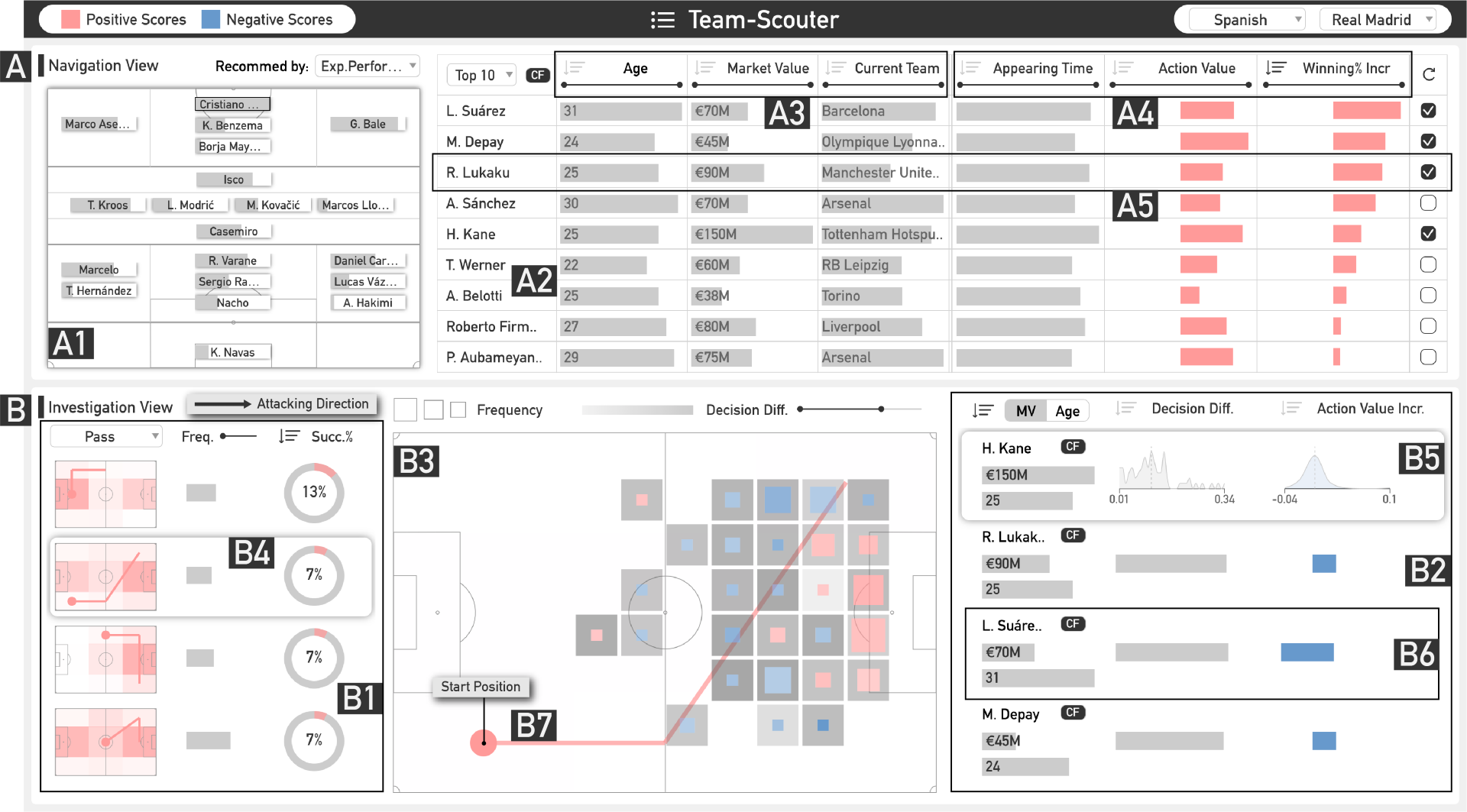Team-Scouter: Simulative Visual Analytics of Soccer Player Scouting
Anqi Cao - Zhejiang University, Hangzhou, China
Xiao Xie - Zhejiang University, Hangzhou, China
Runjin Zhang - Zhejiang University, Hangzhou, China
Yuxin Tian - Zhejiang University, Hangzhou, China
Mu Fan - Zhejiang University, Hangzhou, China
Hui Zhang - Zhejiang University, Hangzhou, China
Yingcai Wu - Zhejiang University, Hangzhou, China
Room: Bayshore V
2024-10-17T14:15:00ZGMT-0600Change your timezone on the schedule page
2024-10-17T14:15:00Z

Fast forward
Full Video
Keywords
Soccer Visualization, Player Scouting, Design Study
Abstract
In soccer, player scouting aims to find players suitable for a team to increase the winning chance in future matches. To scout suitable players, coaches and analysts need to consider whether the players will perform well in a new team, which is hard to learn directly from their historical performances. Match simulation methods have been introduced to scout players by estimating their expected contributions to a new team. However, they usually focus on the simulation of match results and hardly support interactive analysis to navigate potential target players and compare them in fine-grained simulated behaviors. In this work, we propose a visual analytics method to assist soccer player scouting based on match simulation. We construct a two-level match simulation framework for estimating both match results and player behaviors when a player comes to a new team. Based on the framework, we develop a visual analytics system, Team-Scouter, to facilitate the simulative-based soccer player scouting process through player navigation, comparison, and investigation. With our system, coaches and analysts can find potential players suitable for the team and compare them on historical and expected performances. For an in-depth investigation of the players' expected performances, the system provides a visual comparison between the simulated behaviors of the player and the actual ones. The usefulness and effectiveness of the system are demonstrated by two case studies on a real-world dataset and an expert interview.